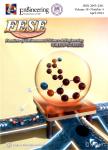Quorum sensing regulation methods and their effects on biofilm in biological waste treatment systems: A review
作者机构:Environmental Simulation and Pollution Control State Key Joint LaboratorySchool of EnvironmentTsinghua UniversityBeijing100084China State Environmental Protection Key Laboratory of Microorganism Application and Risk Control(SMARC)Beijing100084China Guangdong Provincial Key Laboratory of Petrochemical Pollution Processes and ControlSchool of Environmental Science and EngineeringGuangdong University of Petrochemical TechnologyMaoming525099China College of Environmental Science and EngineeringHunan University and Key Laboratory of Environmental Biology and Pollution Control(Hunan University)Ministry of EducationChangsha410082China
出 版 物:《Frontiers of Environmental Science & Engineering》 (环境科学与工程前沿(英文))
年 卷 期:2022年第16卷第7期
页 面:47-59页
核心收录:
学科分类:07[理学] 09[农学] 0903[农学-农业资源与环境] 0713[理学-生态学]
基 金:supported by the National Natural Science Foundation of China(Grant No.52070113)
主 题:Quorum sensing Biological waste treatment Biofilm formation
摘 要:Quorum sensing (QS) plays an important role in microbial aggregation control. Recently, the optimization of biological waste treatment systems by QS regulation gained an increasing attention. The effects of QS regulation on treatment performances and biofilm were frequently investigated. To understand the state of art of QS regulation, this review summarizes the methods of QS enhancement and QS inhibition in biological waste treatment systems. Typical QS enhancement methods include adding exogenous QS molecules, adding QS accelerants and cultivating QS bacteria, while typical QS inhibition methods include additions of quorum quenching (QQ) bacteria, QS-degrading enzymes, QS-degrading oxidants, and QS inhibitors. The specific improvements after applying these QS regulation methods in different treatment systems are concluded. In addition, the effects of QS regulation methods on biofilm in biological waste treatment systems are reviewed in terms of biofilm formation, extracellular polymeric substances production, microbial viability, and microbial community. In the end, the knowledge gaps in current researches are analyzed, and the requirements for future study are suggested.



